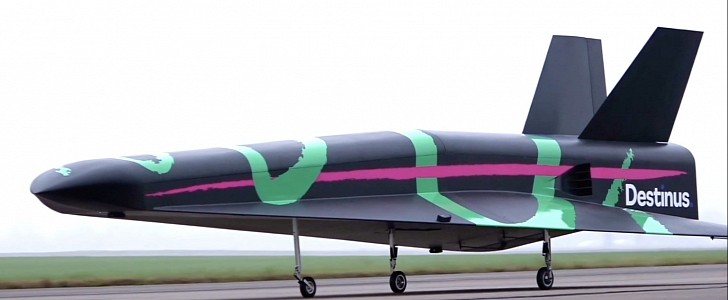Increased speed and autonomous capabilities seem to be some of the main features of future flight. In an era where digital interconnection is at its peak, it seems natural to also expect ultra-fast deliveries to connect various points around the globe, especially in emergency situations. The answer for that could be the hyperplane, a hybrid between a rocket and an airplane that’s also emissions-free and sustainable.
The ability to deliver cargo from one side of the world to another in just two hours is a bold claim, but Swiss startup Destinus is determined to make it happen. Hyperexpress deliveries will revolutionize the way we move any type of goods, especially time-critical ones, and they’ll be possible thanks to a new type of aerial vehicle that could become the world’s fastest means of transportation.
The Destinus hyperplane is a unique rocket airplane that can travel to near-space heights at 15 times the speed of sound. This hybrid aircraft will be able to take off and land horizontally from any major airport, using a hydrogen-powered airbreathing jet engine. Once it gets to the required altitude and speed, it switches to a cryogenic hydrogen rocket engine, reaching hypersonic speed.
The Destinus is also fully autonomous and 30 dB quieter than supersonic airplanes. It combines the technology of a spaceplane with that of a glider, and it’s capable of traveling between continents in just two hours while also not producing any harmful emissions. It’s also a sustainable solution for deliveries, capable of thousands of re-entry cycles.
The Swiss company, with a team made up of former aerospace experts from prestigious companies, has recently secured significant funding, adding up to $29 million (CHF 26.8 million). The funds will be used for advancing the development of hydrogen airbreathing and rocket engines. If things go well, the first test flights should kick off within the next 12 to 18 months.
The combination of hypersonic speed and hybrid flight capabilities with liquid hydrogen-powered engines could turn out to be the Holy Grail of future deliveries.
The Destinus hyperplane is a unique rocket airplane that can travel to near-space heights at 15 times the speed of sound. This hybrid aircraft will be able to take off and land horizontally from any major airport, using a hydrogen-powered airbreathing jet engine. Once it gets to the required altitude and speed, it switches to a cryogenic hydrogen rocket engine, reaching hypersonic speed.
The Destinus is also fully autonomous and 30 dB quieter than supersonic airplanes. It combines the technology of a spaceplane with that of a glider, and it’s capable of traveling between continents in just two hours while also not producing any harmful emissions. It’s also a sustainable solution for deliveries, capable of thousands of re-entry cycles.
The Swiss company, with a team made up of former aerospace experts from prestigious companies, has recently secured significant funding, adding up to $29 million (CHF 26.8 million). The funds will be used for advancing the development of hydrogen airbreathing and rocket engines. If things go well, the first test flights should kick off within the next 12 to 18 months.
The combination of hypersonic speed and hybrid flight capabilities with liquid hydrogen-powered engines could turn out to be the Holy Grail of future deliveries.






